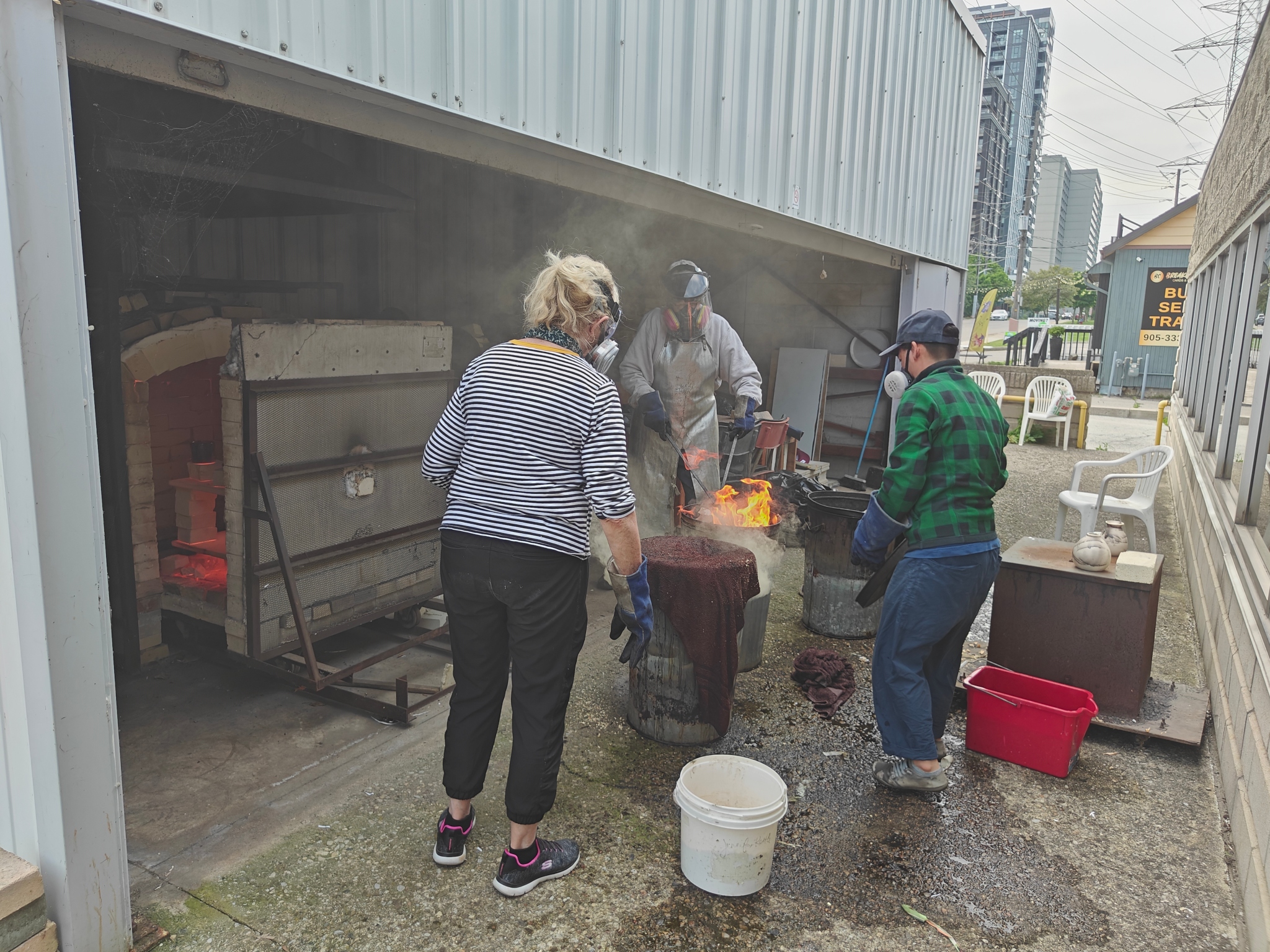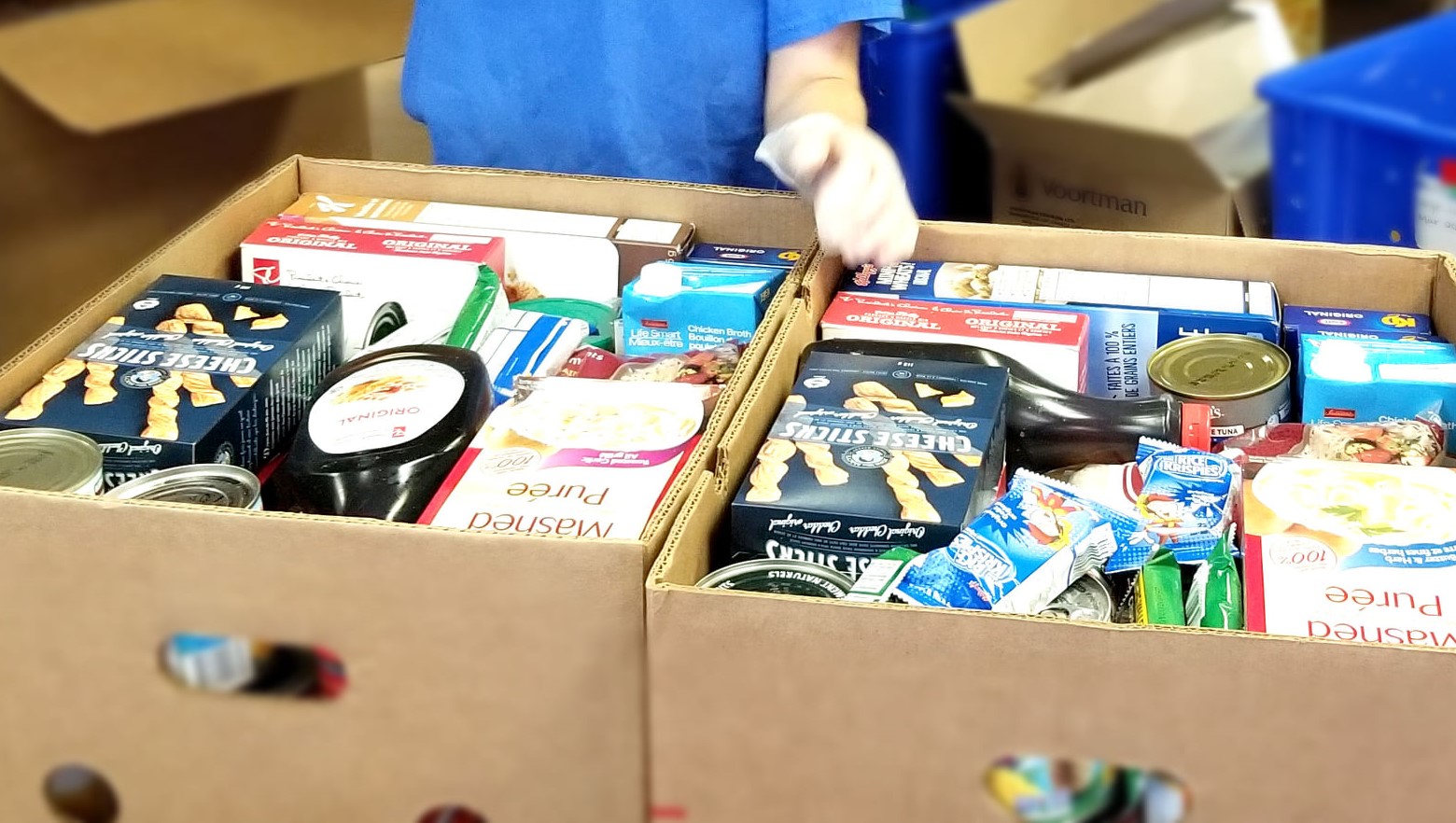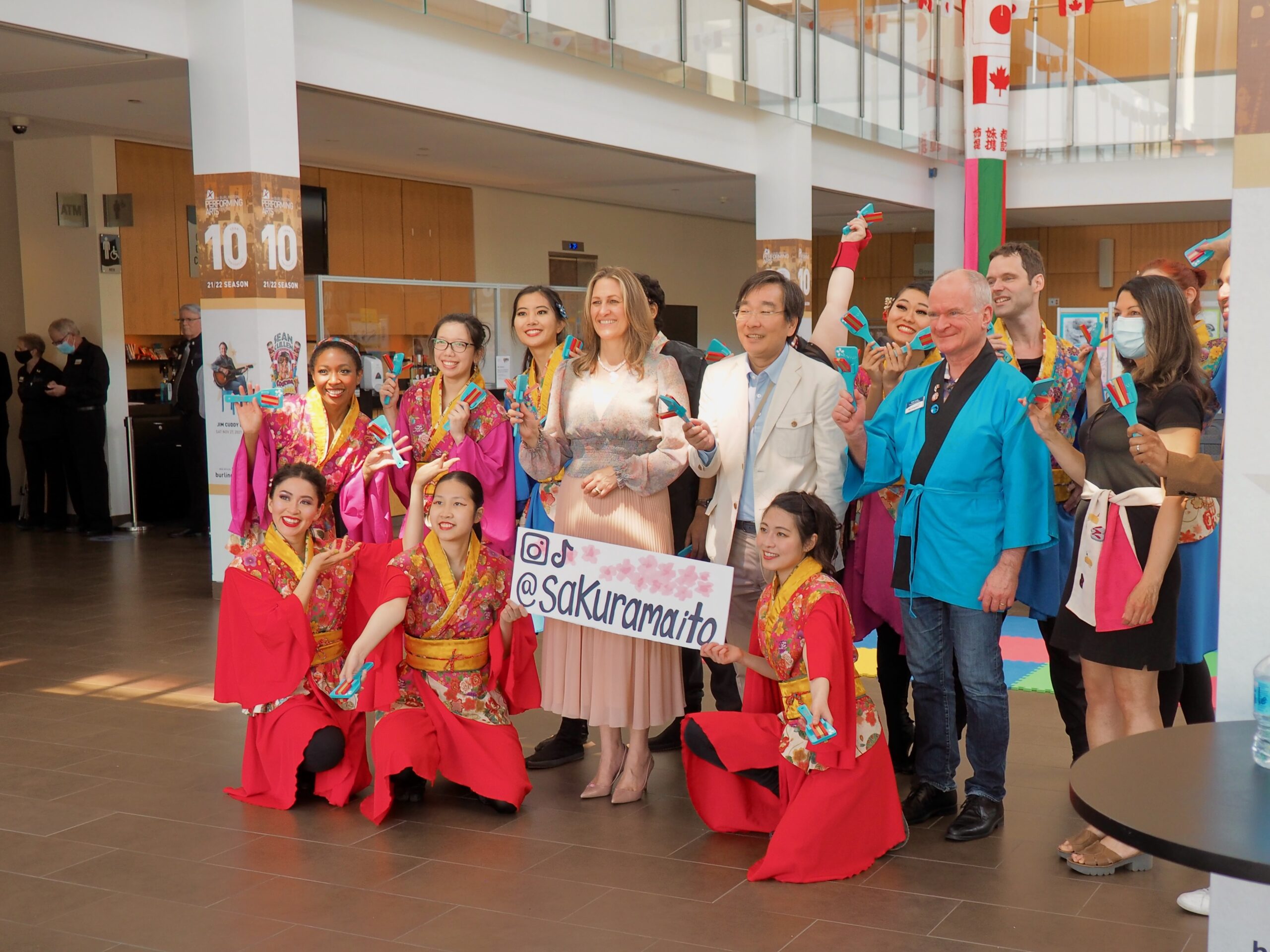It was a big day for Burlington’s Potters Guild, for it was the day that the kiln got heated up to over 1800 degrees Fahrenheit for the communal guild raku firing at the Art Gallery of Burlington, something that happens only twice a year.
Despite the blazing heat, potter Monika Schaefer suited up in protective layers (cotton, which wouldn’t melt in the same way that synthetic fibres would if caught by a stray spark), giant heatproof gloves, a gas mask, a protective face shield, and two hats, in order to place each pot into the pre-heated kiln and then pull them out again some 40 minutes later, with assistance from potters Catherine Thomson and Hitoko Okada.
Raku pottery often uses different glazes than other types of pottery, which, along with the extreme temperature changes, creates the spectacular effects that raku is known for. While the temperatures for raku are considered low (up to 1850 degrees F for metallic and darker matte colours and a relatively cool 1000 degrees F for unglazed vessels), pottery is heated quickly to the desired temperature and taken out of the kiln when still red-hot, then cooled quickly.
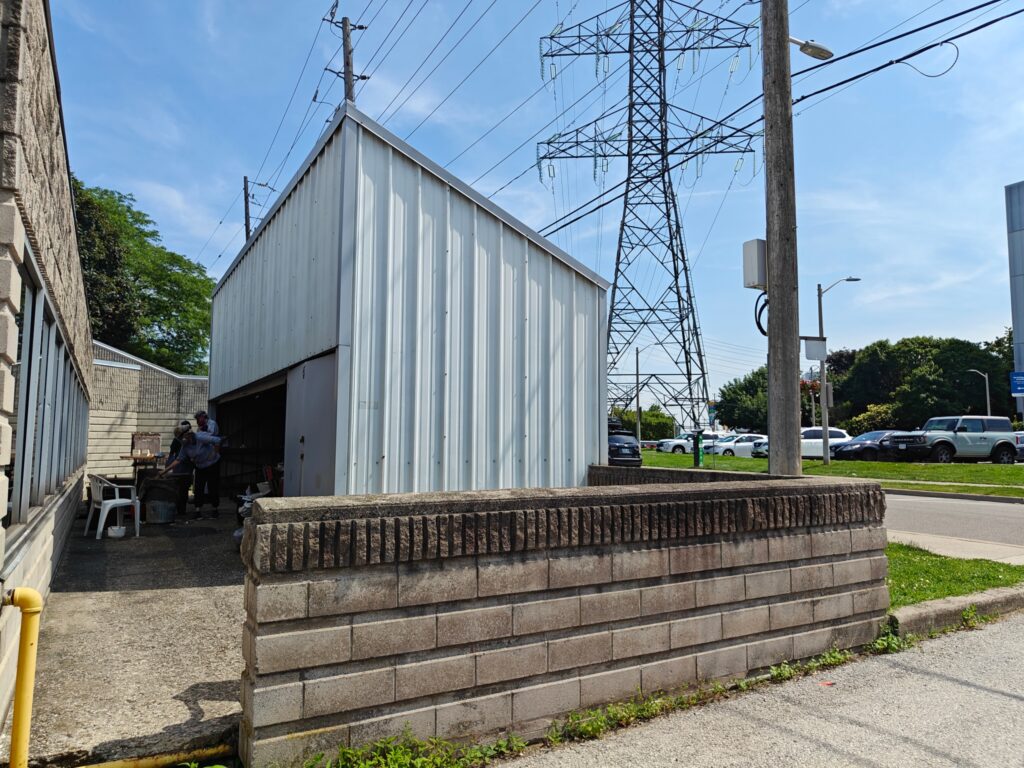

After the three potters pull the kiln open, the vessels are very carefully taken out with a giant pair of tongs and, for the glazed vessels, placed into reduction bins, pre-prepared by filling them with sawdust, newspaper, or wood chips (luckily, the Burlington Sculptors and Carvers Guild also makes its home at the AGB, and save their byproducts for the potters just for this purpose).
“It’s like doing brain surgery wearing oven mitts,” says Schaefer, of taking out the pottery from the kiln with the large tongs while wearing layers of protective gear.
Smoke and fire have both been known to billow out of the reduction bins (which look awfully like metal garbage cans — but, I’m told, are definitely reduction bins) and must be dealt with by replacing the lids, sometimes with a damp towel over top to mitigate some of that toxic smoke. Combustion of the sawdust, newspaper, or woodchips and the subsequent smoke are the goals, though, before placing the lid on top to create that reduction environment: as the glaze melts, the variations in direct heat and lack of oxygen across the surface of the vessel create the swirls of colour, different patterns, and textures.
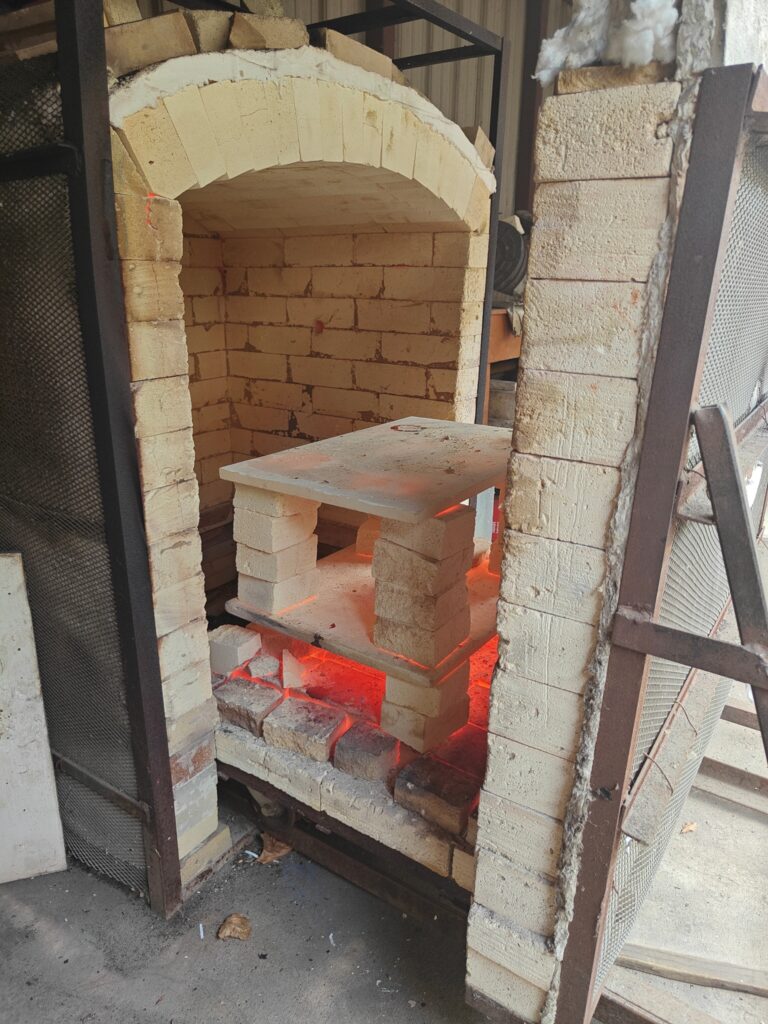
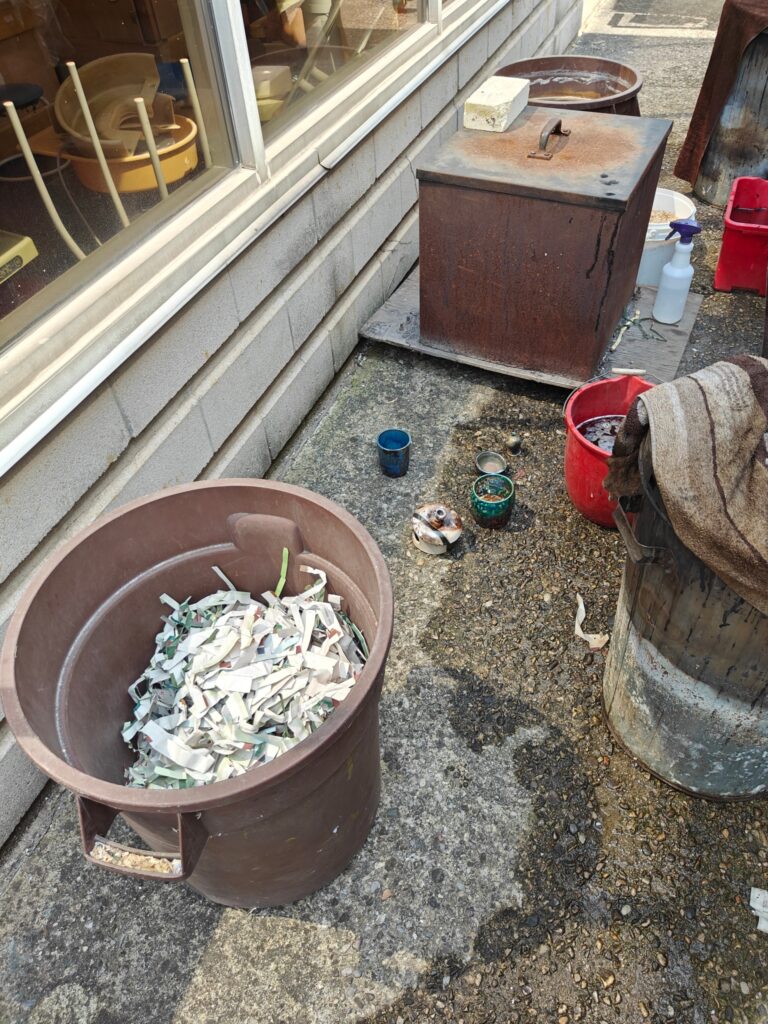

It also makes for exciting viewing: Schaefer, Thomson, and Okada are either in motion or waiting to spring into action as soon as the kiln is open, taking the pottery vessels out (Schaefer’s job), adding more combustible materials to the reduction bins (everyone pitches in), licks of fired escaping over the edge, then trying to dampen the billowing smoke with those damp towels.
The next step is immersing the vessels in cold water, effectively sealing in the colours and patterns on the surface of the vessel.
The unglazed vessels that come out at 1000 degrees F are for horse hair pieces: after coming out of the kiln, horse hair is applied to the vessel, which then quickly burns away, leaving dark lines and smudges of colour from the resulting smoke. Other material might also be applied: feathers, dog hair, human hair (the author of this piece donated some hair for Schaefer’s final horse hair raku piece, as did potter Farrah — not as coarse as horse hair, the human hair left finer patterns on the vessel).
Because of the extreme temperature changes, vessels break fairly frequently, more so than in other methods of firing pottery. The trick, Schaefer says, is not to get too attached to any one piece, because it may not make it through the whole process.
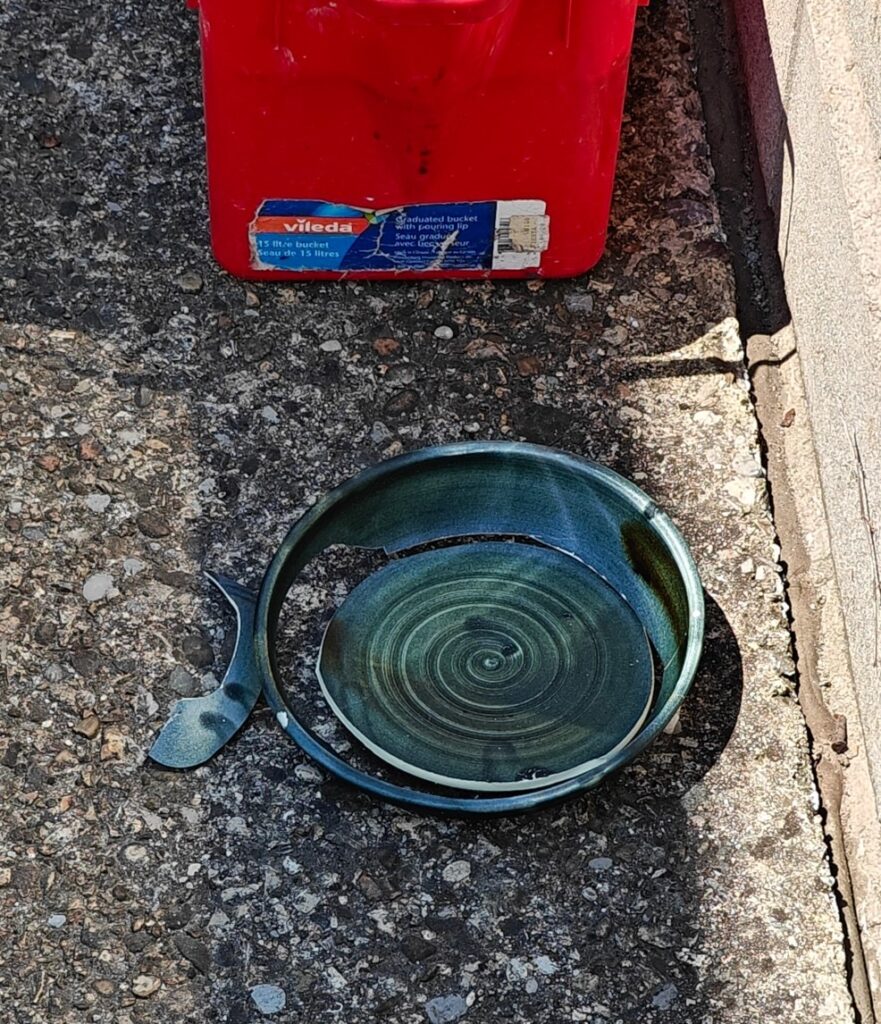
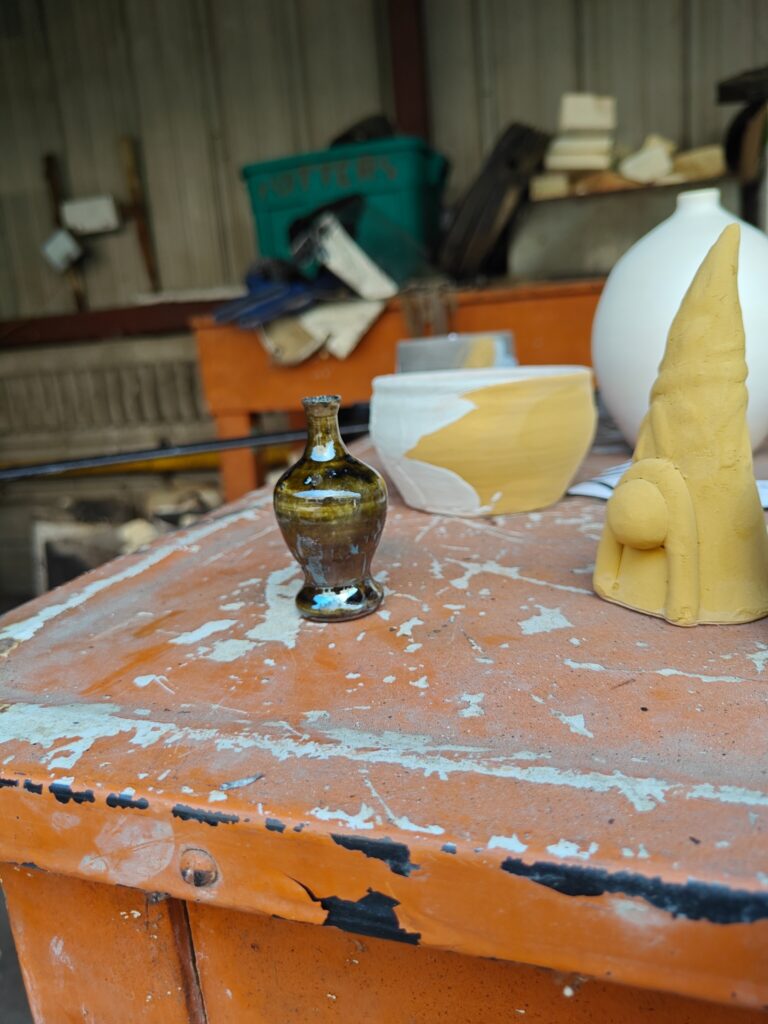
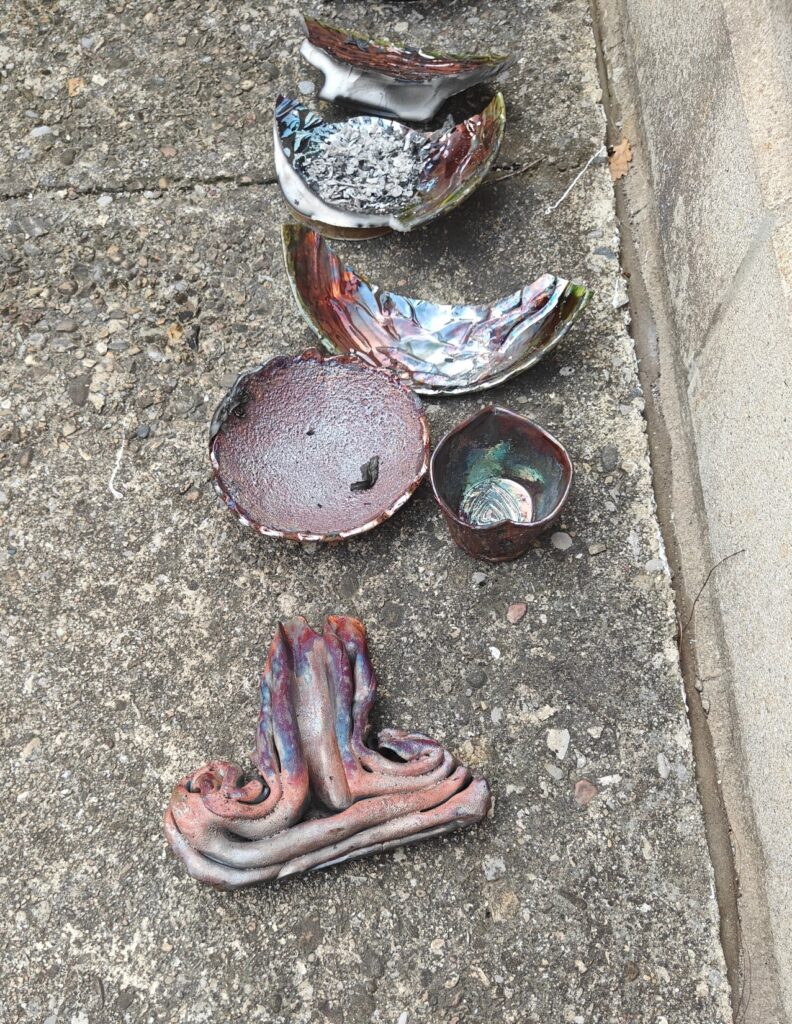
The vessels then sit outside to cool completely before being brought in for a wash in the sink.
Schaefer, Thomson, and Okada are in and out between pottery studio and kiln all day, up until around 5 p.m. — because this is only a biannual event, there are a number of batches of vessels to go into the kiln, made by any guild member who would like to try their hand at making a raku piece or two.
The guild members go about their business at the studio, throwing clay on wheels, building pieces out of clay slabs, and then helping transport and wash the cooled-down raku pieces when they’re ready. Many stop to watch the kiln-to-reduction bin process through the windows or venture outside to take a closer look (but not too close — it is indeed very hot and difficult to stay away from the blowing smoke, as the wind keeps changing direction).
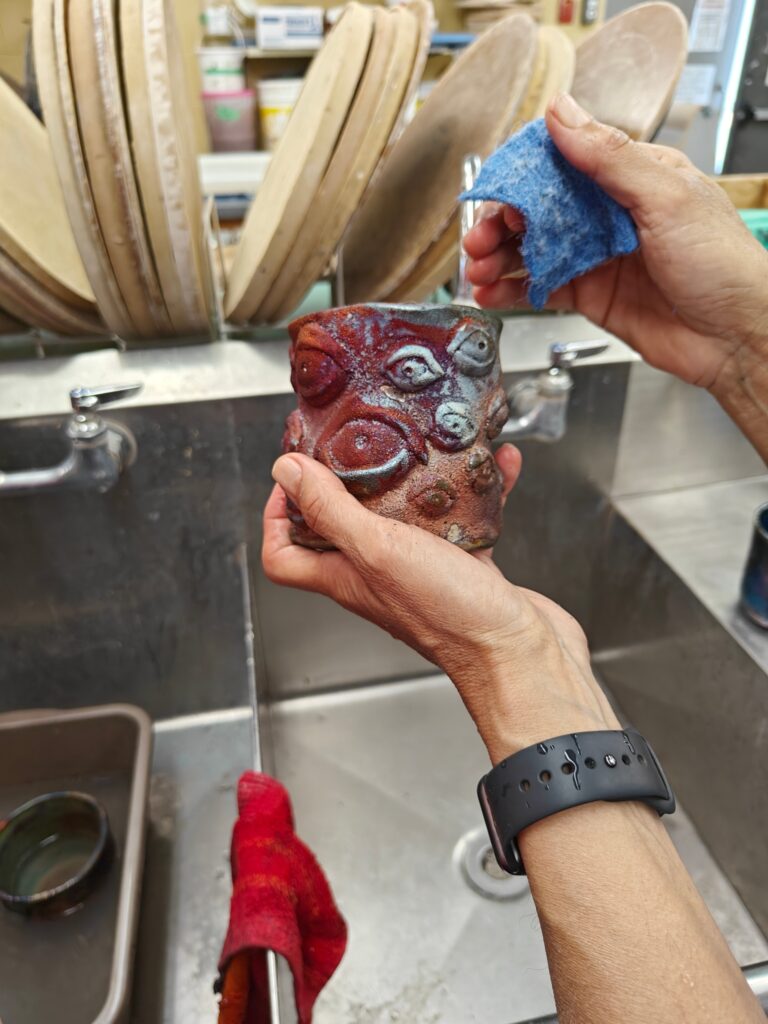
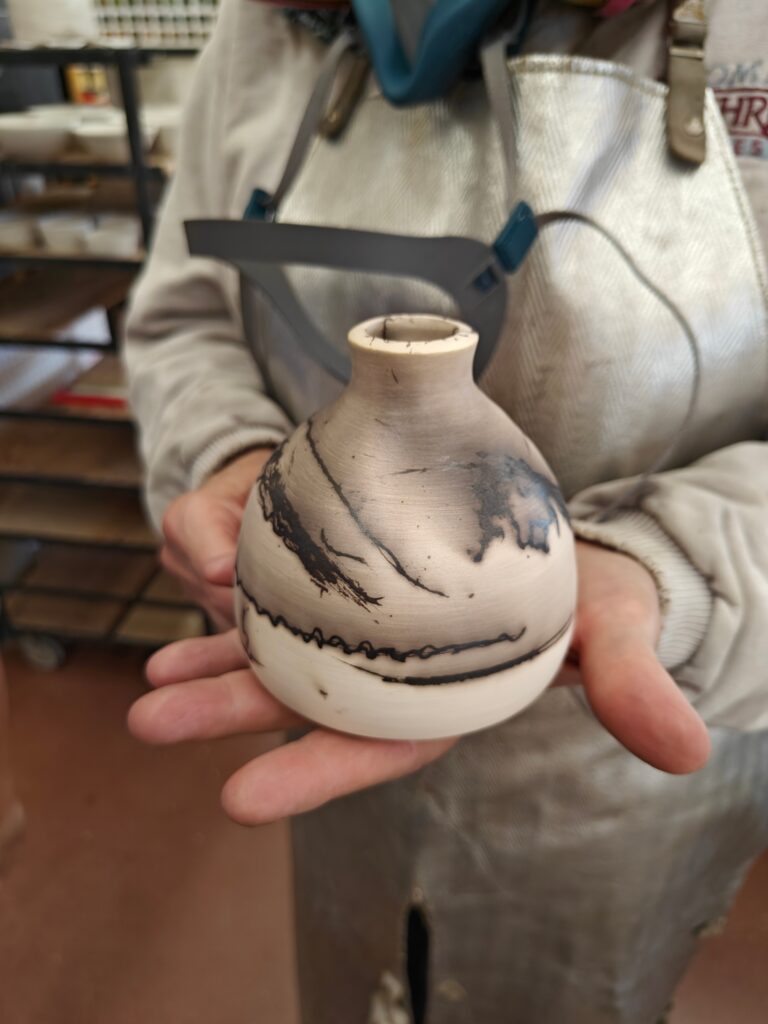
While raku has its roots in ancient Japan, the process described here is the Western iteration, developed in the 20th century. The ancient practice involved letting the hot pieces cool more slowly.
Part of the beauty of raku is that potters don’t know exactly what will result from the process; of course, they make decisions about the colour of the glaze and the technique, and perhaps other decorative features (one Burlington potter added a repetitive eye motif that resulted in a stunning piece). The word “raku” itself reflects that unpredictability: it translates as “enjoyment,” “ease,” or “comfort.” It is said to mean “happiness is in the accident,” possibly interpreted from the “ease” of sitting back and letting the pottery turn out however it happens, and finding the “enjoyment” in that process.
In any case, what is true is that the pieces of raku pottery that survive the entire process are one-of-a-kind pieces, and many potters have fallen under raku’s spell, and, despite the intense heat, this author can see why.
For more information on the Burlington Potters Guild (and the city’s five other guilds), click here to go to the Arts Burlington website.
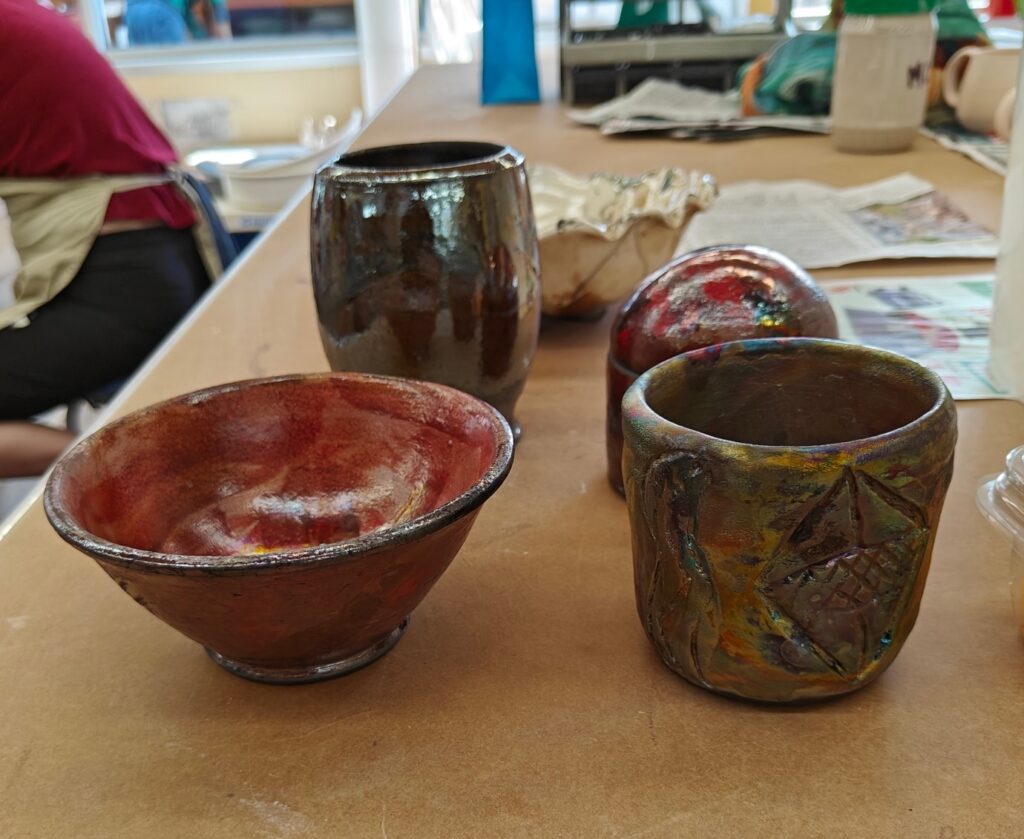
Correction notice: this article has been updated to more precisely and accurately reflect the raku process. Our apologies for any inconvenience caused (thanks/sorry, Monika!).

